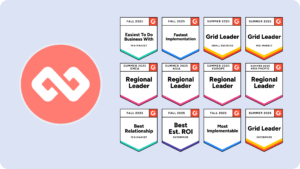You only get out what you put in. The right mentoring process (the input) is integral to the results you take away from mentoring (the output). Mentoring is sneaky in the sense that it seems relatively soft. It appears that people would be able to figure it out on the fly or wing it, and that building an effective mentoring program is pretty self-explanatory.
If only it was that easy!
Good mentoring requires a good mentoring process – a process that dictates direction, cadence, and guides the mentoring program to success.
Rather than focus on what the right process looks like for just mentors, mentees, or mentoring program coordinators, we thought we’d address them all in some detail — as they are all closely linked.
In fact, it’s interesting to see the synergies between the processes when they work in harmony and create ✨true mentoring magic✨.
The Mentoring Program Coordinator Process
Step 1: Build
This critical part of running a successful mentoring program comes before the program is launched. Because before you can run a successful mentoring program, you need to build one with purpose and clarity. This means setting your goals, defining your success metrics, choosing your format, and selecting a theme or focus area.
With Mentorloop Pro, this step is simple! The built-in Program Builder walks you through a quick 3-step setup process, helping you make key decisions quickly and confidently. It also comes with a proven set of questions for your signup form that you can easily edit, select, or delete to fit your program’s needs.
On Mentorloop Enterprise, you’ll get even more customisation and support. You’ll also have access to a dedicated Customer Success Manager who will guide you one-on-one through designing a program that aligns with your organisation’s goals.
Step 2: Promote and Recruit
Once your program is built, it’s time to get people excited and ready to join. Promotion really matters! Even the best mentoring programs need a little buzz to get off the ground. Share the news through your intranet, internal newsletters, emails, events, or info sessions—whatever works best for your people.
If you’re using Mentorloop, you’ll have a bunch of helpful tools to make this part easy. You get access to ready-to-go templates, resources, and training sessions that support you across all your chosen channels.
And once you’ve got your mentors and mentees on board, make sure their onboarding experience is a good one. That first impression goes a long way in keeping them engaged and excited about what’s to come.
Step 3: Match
The most talked about part of the mentoring process is matching. Matching is quite clearly a critical component in the mentoring process and requires a bit of strategy and a bit of execution.
The strategy component involves deciding on the why of your mentoring program — which is derived from the outcomes you want to achieve (e.g you want to match juniors with same department seniors for leadership development), which means matching based on those criteria. The execution piece centres on actually matching, whether that be by spreadsheet and email (not recommended 😬), or by using dedicated matching software.
Step 4: Guide
Many program coordinators let their mentoring programs down by thinking that matching is the final part of the process. It’s not. It’s the beginning of the mentorship.
The vast majority of your mentors and mentees are unseasoned: they don’t have mentorship experience. You need to supply them with the resources and content required to make their mentorship work. This can include agreements, checklists, and agenda suggestions at the start and during the mentorship.
Make sure part of your process is setting your mentors and mentees up for success.
Step 5: Measure
We highly recommend that you gather feedback and measure your program as you go, not just at the end. This is so that you can use the information you gather to make sure your whole cohort is having a great experience in their mentoring journey.
The Mentee Process
Once a mentoring program has begun, it’s usually down to the mentee to ensure that their process is one that drives forward progress. The mentee is the stakeholder who is set to gain the most, and hence should be the stakeholder who drives the mentoring ship.
Step 1: Say thanks, agree on expectations, and set up the first meeting
The first job of the mentee is to show appreciation for your mentor for offering their time. This includes showing that you respect their time by not just thanking them but also being proactive in setting early expectations and boundaries.
This can be done in a simple message or email, or in the first meeting or in-person interaction. Make sure you set the first meeting straight away so that no one is left in the dark or in an awkward spot.
Step 2: Meet and set goals
The first meeting really is the crux of the mentoring process for mentees.
It’s when the mentee must make their goals and intentions clear to the mentor, so that the mentor has a good first impression and understands where they can add value.
Depending on how you are set to be mentored, set a few different types of goals: habit-forming goals, reach goals, and stretch goals. During the mentorship, these goals will guide your discussions and the rest of the process.
Step 3: Track your progress
Between months 1 and 6, the success of the mentorship will be based on the mentee coming back to the mentor with progress updates, successes, and new obstacles.
It’s the mentee’s job to find the most suitable way to accurately track and share their efforts. Only then can the mentor help overcome obstacles or help reshape the mentee’s strategy.
Step 4: Feedback
Listening and receiving feedback is a more proactive part of the process than most people realise. When a mentor gives advice or insight, it’s critical that the mentee notes it down, remembers it, and makes an effort to apply it to their endeavours.
This helps create forward momentum and shows the mentor that their time and insight are valued.
Step 5: Close the right way
Most mentorships (especially in the workplace or university) come to a natural close as people’s careers and lives progress. Part of the mentee process is to ensure you close this mentoring chapter positively then and open new ones.
This involves maintaining a good relationship to ensure that your valued mentor becomes a part of your personal advisory board (most mentors are happy to be reached out to during decisive moments of careers etc.), and then leveraging this new resource.
A great thing to do is to also ask your mentor if they can recommend other mentors that you can connect with.
The Mentor Process
Much has been made of the role the mentor should play in the process. Should they be charged with initiating communication at any point during the mentorship? Should the mentor be responsible for any meeting prep?
The answer to this really does come down to the mentor. And the fact of the matter is that either way, it’s worth it.
My best mentors have chosen to guide the mentee process; by sitting down on day 1 and helping me set goals for the next few months. Then they actively held me accountable and tracked my goals — and set up follow-up meetings.
In some settings, it’s far more appropriate for the mentee to drive the engagements. I have a new mentor based out of San Francisco and we were matched relatively informally. He agreed to mentor me; now we connect when I run into an obstacle and he provides me with his insight and experience. This mentorship works best when I drive the engagement and bring my problems to him.
Factoring these thoughts into the equation, there are some fundamental steps to the mentor process which help both mentors and mentees get more from their time together.
Step 1: Understand what your mentee is looking for
The first part of the mentor’s process is to try and understand where they can add value to the mentorship. Understanding this stems from getting a clear articulation from the mentee as to what their goals and objectives are, and then finding the gaps where the mentor can help.
Step 2: Help your mentee shape their goals
Mentors bring experience to the table; that experience can be in years, or applicable experience. Either way, mentors can often add value because they have navigated the mentee’s path before.
For this reason, a mentor should help shape a mentee’s goals. The mentor can look at their own experience in retrospect and understand where they could have been better, smarter, or faster.
These insights should help shape the mentee’s goals; making them more ambitious, less ambitious, or helping to help them understand exactly what they might be looking to do.
Step 3: Keep your mentee accountable
Many mentors differ in their opinions of this element of the process: Should a mentor be charged with holding the mentee accountable? The answer in my mind is yes, to an extent.
The mentor doesn’t need to act like a parent, nor be strict about it, but checking in with the mentee and focusing on how they are moving forward is an essential part of being a good mentor. After all, that (and context) is what separates a mentor from plain information.
Step 4: Provide feedback and suggestions for progress
At every stage of the mentorship, the mentor should be looking to provide feedback and suggestions. This is the part of the process that makes the mentee take stock and shift their goals and agenda, which is what creates better results than what the mentee could have achieved alone.
Step 5: Conclude
Saying goodbye to a mentee can be hard, but their life changes, as does yours. There comes a time in a mentorship when your experience, chat, and advice is mostly exhausted, for now.
When this time comes, offer to be there when you are needed, think about if there is another mentor who you could pass your mentee onto for even more progress, and make the mentee feel good about their efforts by reminding them of how much they have grown and changed.
None of these steps are rocket science; in fact, most of them are pretty simple. It’s not the process that is hard — but understanding the process and implementing it at scale.
The mentoring process is the key to mentoring success — for mentoring program coordinators, mentors, and mentees.
Get your mentoring processes right and you’ll be well on your way to mentoring success.


![[Webinar Kit] Building the Blueprint: Designing Your Best Mentoring Program Yet Learn how to design and build a mentoring program that serves your organization’s goals, engages participants, and delivers measurable outcomes.](https://no-cache.hubspot.com/cta/default/4058869/interactive-190169165857.png)


![[Webinar Kit] Engagement by Design: Crafting Mentoring Experiences that Stick Discover the proven playbook to spark lasting engagement in your mentoring programs — from launch to long-term success.](https://no-cache.hubspot.com/cta/default/4058869/interactive-202582711124.png)
![[Webinar Kit] Prove It: How to Measure and Report Mentoring Success Explore the common measuring and reporting challenges, what ROI really is for your mentoring program, and how to measure and report what matters with confidence.](https://no-cache.hubspot.com/cta/default/4058869/interactive-195745935504.png)



